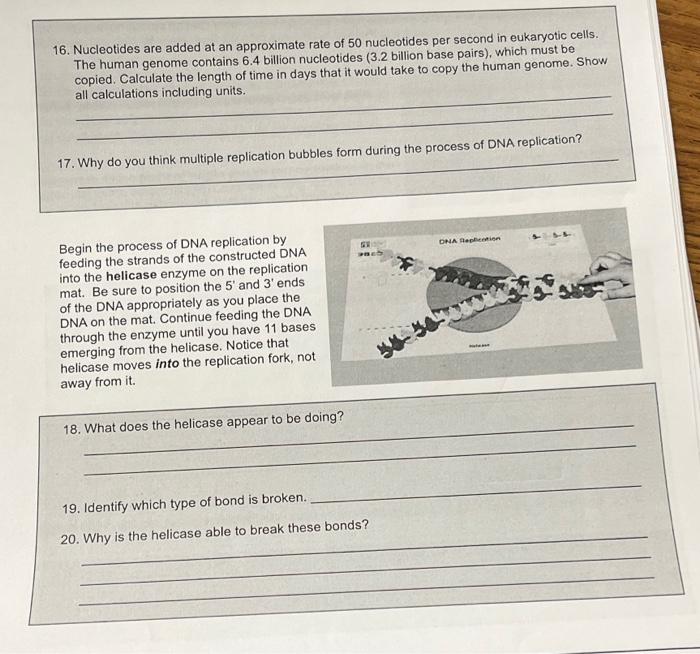Answered step by step
Verified Expert Solution
Question
1 Approved Answer
16. Nucleotides are added at an approximate rate of 50 nucleotides per second in eukaryotic cells. The human genome contains 6.4 billion nucleotides (3.2

16. Nucleotides are added at an approximate rate of 50 nucleotides per second in eukaryotic cells. The human genome contains 6.4 billion nucleotides (3.2 billion base pairs), which must be copied. Calculate the length of time in days that it would take to copy the human genome. Show all calculations including units. 17. Why do you think multiple replication bubbles form during the process of DNA replication? Begin the process of DNA replication by feeding the strands of the constructed DNA into the helicase enzyme on the replication mat. Be sure to position the 5' and 3' ends of the DNA appropriately as you place the DNA on the mat. Continue feeding the DNA through the enzyme until you have 11 bases emerging from the helicase. Notice that helicase moves into the replication fork, not away from it. DNA Replieetion 18. What does the helicase appear to be doing? 19. Identify which type of bond is broken. 20. Why is the helicase able to break these bonds?
Step by Step Solution
★★★★★
3.32 Rating (167 Votes )
There are 3 Steps involved in it
Step: 1

Get Instant Access to Expert-Tailored Solutions
See step-by-step solutions with expert insights and AI powered tools for academic success
Step: 2

Step: 3

Ace Your Homework with AI
Get the answers you need in no time with our AI-driven, step-by-step assistance
Get Started


